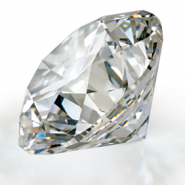Diamonds can be a symbol of wealth and power. While those purchased and worn by most consumers are more modest, many are sent to GIA to be graded on the 4Cs of diamond quality; Color, Cut, Clarity, and Carat. Including a stunning 120ct blue diamond that was recently cut to improve the beauty and value of the stone.
Learn how GIA was involved with this remarkable diamond.
Read More >>Shimmering with an internal fire all its own, diamond is one of the world’s most sought-after and adored gemstones.
Read More >>The effect of the lighting environment was well understood by jewelers in the late 1800s. Minimal grading standards at the time included “good north light unobstructed by buildings or other objects”, grading between the hours of 10am and 2pm only, no use of artificial light, and use of the same location for grading (amongst others that are less important to this story).
Read More >>Synthetic diamonds are grown in a laboratory and have essentially the same chemical composition and crystal structure as natural diamonds formed millions of years ago. In the last 30 years, gem quality synthetic diamonds have been grown in Japan, South Africa, Russia, Ukraine and the United States. Synthetic diamonds are generally produced using either High Pressure/High Temperature (HPHT) or Chemical Vapor Deposition (CVD).
Read More >>The engagement ring’s romantic traditions resonate through time. The Romans first introduced the betrothal ring as a plain, iron hoop. Among the gentry, the iron ring was worn while indoors and replaced with the more valuable gold band when outdoors. As early as the 4th century AD, inscriptions, elaborate or as simple as “honey,” embellished the inside of the band.
Read More >>

